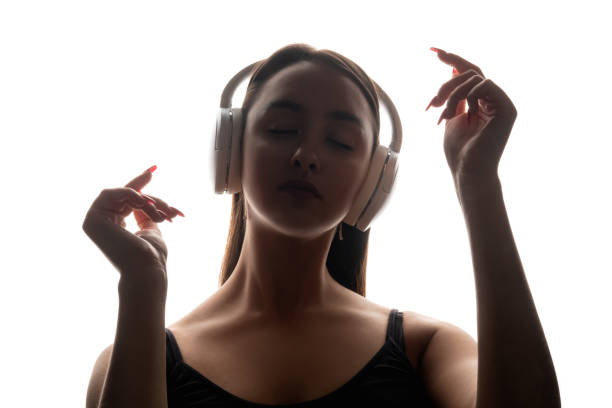Body movement Therapy
What Is Dance Movement Therapy
Welcome to the realm of dance movement therapy, where the healing arts meet the power of movement. It is a novel method to treatment that uses the expressive and therapeutic elements of dance and movement to help people achieve emotional, physical, and psychological well-being.
The language of the body becomes a tool for transformation in these sessions, helping individuals to examine their emotions, release stress, and improve their general mental health. Dance movement therapy, through the investigation of diverse movement modalities and creative expression, provides a safe and non-judgmental environment for individuals to explore their inner selves, connect with others, and find a route to healing and progress.
Dance movement provides a unique and holistic approach to managing anxiety, improving self-esteem, coping with trauma, or just enhancing self-expression. So put on your dance shoes and allow the beat to lead you on a journey of self-discovery and healing.
Learn how dance movement can help you reach your full potential and improve your overall well-being. Let go, dance, and discover release through movement.

The history and origins of dance movement therapy
Dance movement has a long history dating back to the early twentieth century. Marian Chace, a pioneer in the discipline, was the first to identify the tremendous effects of dance and movement on the human mind. Chace believed that movement might be a means of self-discovery and healing, therefore he began incorporating dance into therapeutic settings.
Dance movement has grown and extended over time, receiving inspiration from a variety of disciplines such as psychology, neuroscience, and somatics. It is now accepted as a valid kind of therapy and is practiced all over the world.
Understanding the principles of dance movement therapy
Several basic ideas that guide the practice of dance movement therapy are at the heart of the practice. Embodiment, nonverbal communication, and the union of mind, body, and spirit are among these principles.
The process of becoming aware of and connecting with one’s body is referred to as embodiment. Individuals are encouraged to explore their sensations, emotions, and thoughts through movement in dance movement, allowing for a deeper understanding and acceptance of oneself.
Nonverbal communication is essential in dance movement. Individuals can express and explain their inner sensations via movement in ways that words may not be able to fully capture. This enables greater self-expression and interaction with others.
A major principle of dance movement is the integration of mind, body, and spirit. Individuals can access and integrate all aspects of their existence through movement, resulting in a sense of wholeness and well-being.

The benefits of dance movement therapy
Dance movement has numerous advantages for people of all ages and backgrounds. Among the many advantages are:
- Emotional release: Movement allows people to release pent-up emotions and stress, resulting in a sense of emotional relaxation and catharsis.
- Self-expression: Dance movement provides a safe and non-judgmental environment for individuals to honestly express themselves, increasing self-confidence and self-esteem.
- Stress reduction: Dance and exercise can help relieve stress by encouraging relaxation, improving sleep quality, and increasing endorphin production, the body’s natural mood-enhancing hormones.
- Improved body awareness: Dance movement can help people create a good relationship with their bodies, leading to better self-image and body acceptance.
- Enhanced social connection: Participating in dance movement sessions encourages people to connect with others in a more meaningful and embodied way, building a sense of belonging and community.
- Trauma healing: Dance movement has been demonstrated to be useful in assisting individuals in processing and recovering from traumatic situations. The body-centered approach allows for the investigation and release of trauma stored in the body in a safe environment.
Overall, dance movement provides a holistic approach to healing and well-being, addressing individuals’ physical, emotional, and psychological needs.
How dance movement therapy works
Dance movement therapy sessions are often held in a group or individual environment, with a qualified dance movement therapist leading the way. Individuals can examine their emotions, thoughts, and movement patterns in a safe and supportive atmosphere created by the therapist.
Warm-ups, which entail moderate exercises and stretches to prepare the body for deeper investigation, may precede sessions. Following that, the therapist leads participants through a variety of movement exercises, improvisation, and structured dances, enabling self-expression and self-reflection.
To enhance the creative process, the therapist may use props such as scarves, ribbons, or musical instruments. Music is essential in dance movement therapy because it facilitates emotional expression, rhythm, and connection to the body.
The therapist watches and interacts with participants during the session, offering support, feedback, and advice as needed. The therapeutic relationship between the therapist and the participant is critical because it establishes a trustworthy and safe environment for exploration and healing.

Different approaches and techniques used in dance movement therapy
Dance movement therapy involves a wide range of approaches and techniques, each suited to the individual’s specific needs. Among the most common approaches are:
- Authentic Movement: This method focuses on the individual’s inner experience, allowing them to explore their authentic self via spontaneous movement.
- Laban Movement Analysis: Is a framework that assists individuals in gaining understanding into their movement patterns, preferences, and attributes. It serves as a tool for introspection and self-discovery.
- Dance Improvisation: Dance improvisation invites people to experiment with movement in the current moment, without regard for predefined choreography. It promotes improvisation, creativity, and self-expression.
- Dance/Movement Psychotherapy: Dance/Movement This method of psychotherapy mixes regular talk therapy with movement and dance. It combines verbal thinking with embodied sensations to provide a more comprehensive approach to therapy.
- Group Dance Therapy: Group dance therapy entails moving and dancing in a supportive group setting. It encourages social interaction, empathy, and the sharing of common experiences.
These are only a few ways and strategies utilized in dance movement. Dance movement therapists frequently draw from many modalities and adjust their approach to their clients’ needs.
Case studies and success stories of dance movement therapy
Numerous case studies and success stories back up the effectiveness of dance movement. Here are a couple such examples:
- Sarah, a domestic violence survivor, discovered healing and strength through dance movement therapy. She was able to release pain trapped in her body via movement and restore her feeling of self-worth and autonomy.
- Mark, a socially anxious adolescent, saw considerable improvements in his confidence and social skills after engaging in group dance therapy sessions. Because the therapy was embodied, he was able to connect with others and conquer his fear of judgment.
- Emily, a young girl with autistic spectrum condition, discovered happiness and self-expression via dance movement therapy. The sessions’ rhythmic and regulated nature assisted her in regulating her sensory experiences and developing better body awareness.
These are just a few examples of how dance movement has improved people’s lives. The transforming experiences of those who have participated in these sessions demonstrate the power of movement and dance.

Who can benefit from dance movement therapy
Dance movement therapy benefits people of all ages and backgrounds. It can help persons facing a variety of issues, such as:
- Anxiety and depression
- Post-traumatic stress disorder (PTSD)
- Eating disorders
- Substance abuse
- Chronic pain
- Developmental disorders
- Relationship difficulties
- Body image issues
Individuals who struggle with typical talk therapy procedures or find it difficult to express themselves verbally may benefit from dance movement therapy. Dance movement therapy’s nonverbal nature gives an alternate and effective form of communication and healing.
How to become a dance movement therapist
Specialized training and education are required to become a dance movement therapist. A bachelor’s degree in a related subject, such as dance, psychology, or social work, is required for most dance movement therapy programs. A master’s degree program in dance movement therapy or a comparable subject is also often necessary.
To become a registered dance movement therapist (R-DMT), aspiring dance movement therapists must first complete supervised clinical experience and then pass a certification exam. Maintaining certification and remaining up to date with the latest research and practices in the sector requires continuing education and professional development.
Conclusion
As the field of dance movement therapy continues to grow, its potential for healing and transformation becomes increasingly recognized. The integration of movement, dance, and therapy offers me a unique and powerful approach to addressing my complex needs.
The future of dance movement therapy holds promise for further research, innovation, and the expansion of its applications. With growing awareness of the mind-body connection and the importance of holistic approaches to well-being, dance movement therapy is poised to play an increasingly significant role in the field of mental health.
So, whether I’m looking to explore my emotions, enhance my self-expression, or support my overall well-being, dance movement therapy invites me to step onto the dance floor and embark on a journey of self-discovery and healing. I’ll let the rhythm guide me, and let my body speak the language of transformation.


